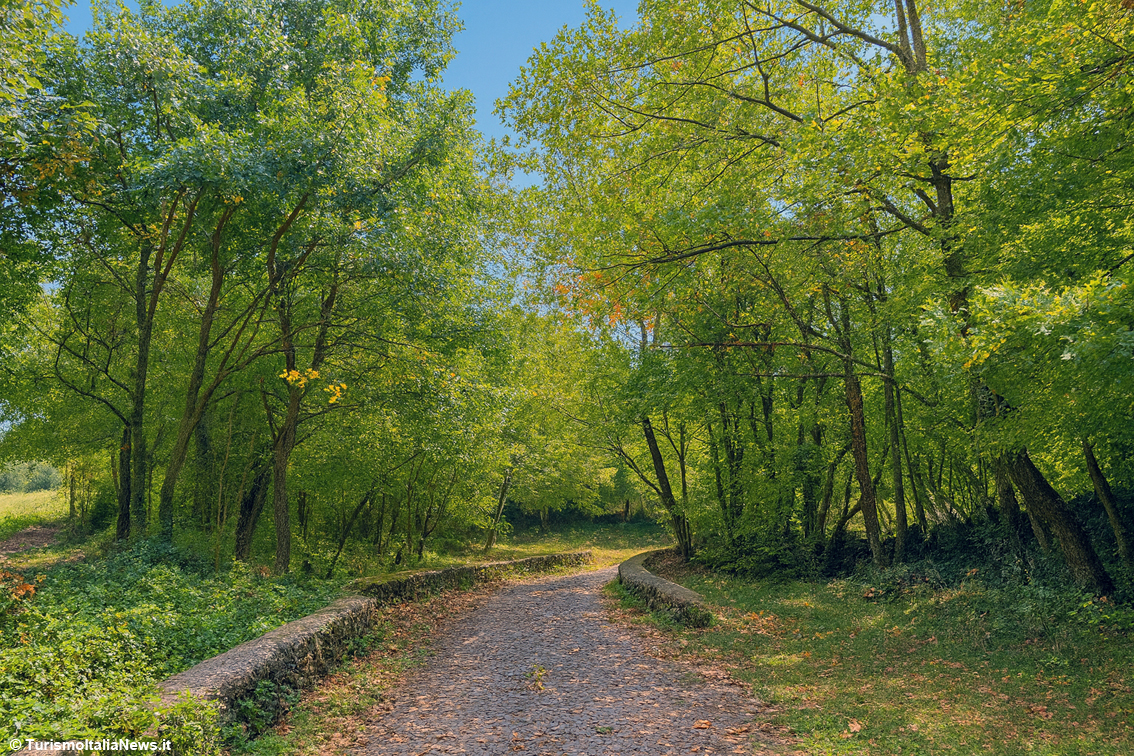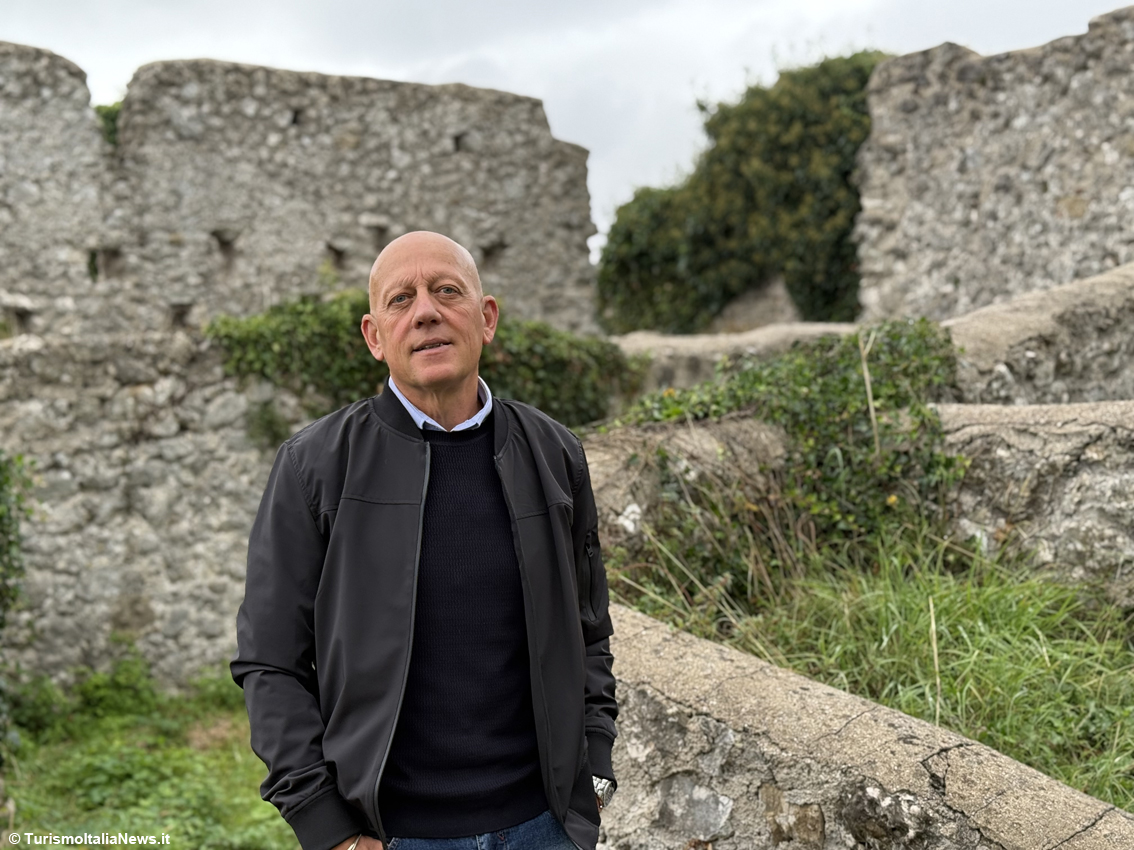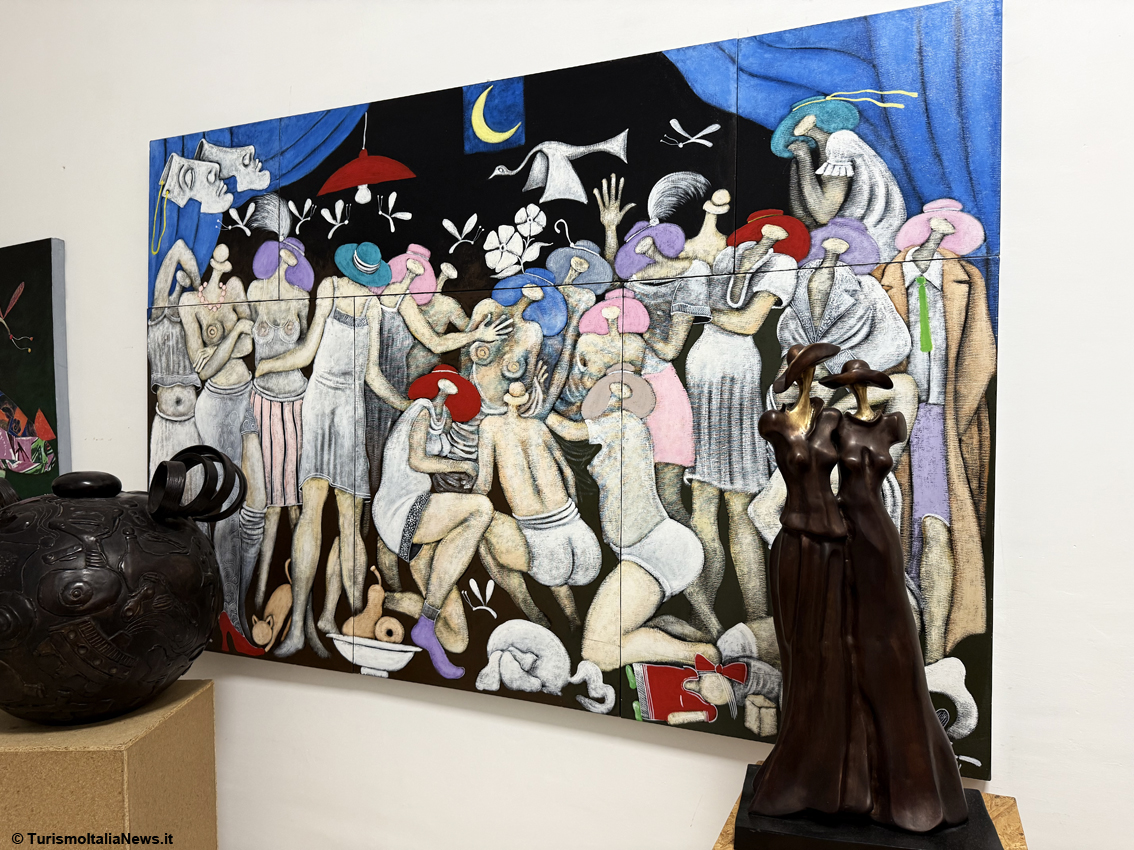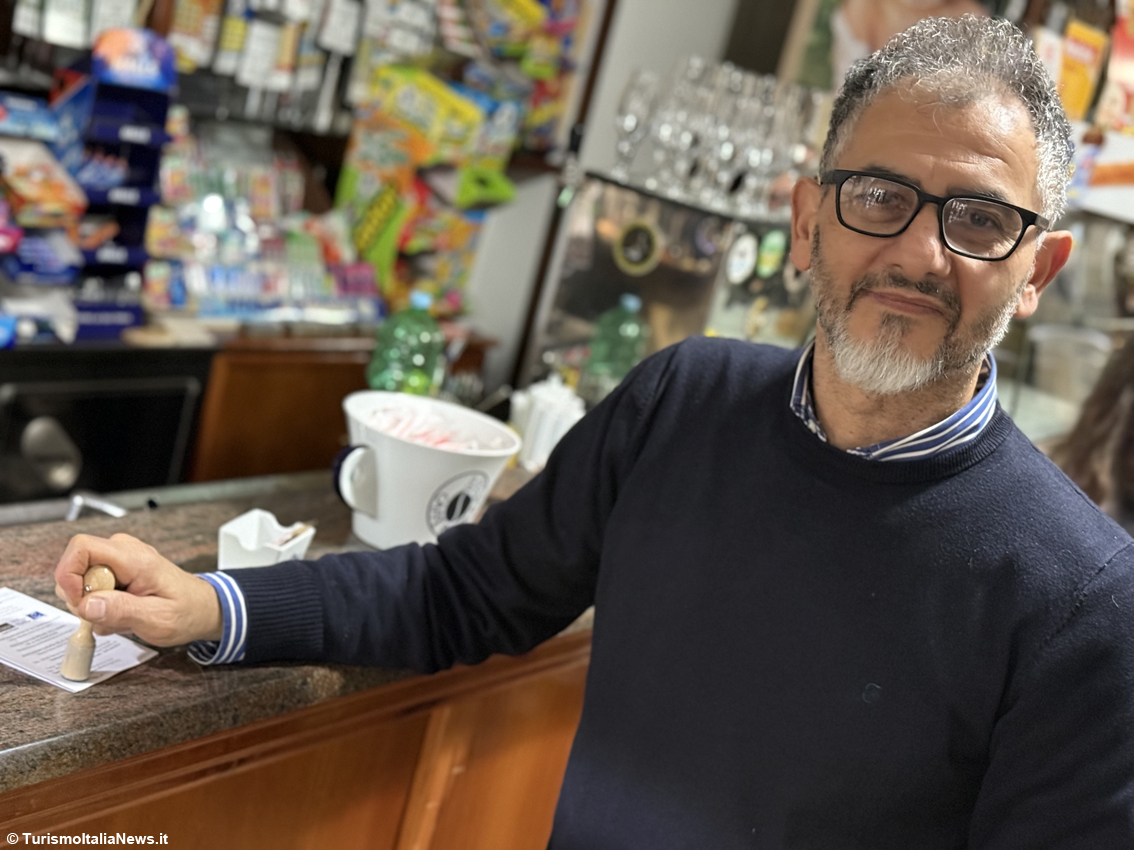Gioia Sannitica: saints, witches, knights and artists along the Southern Via Francigena — Discover the village that surprises
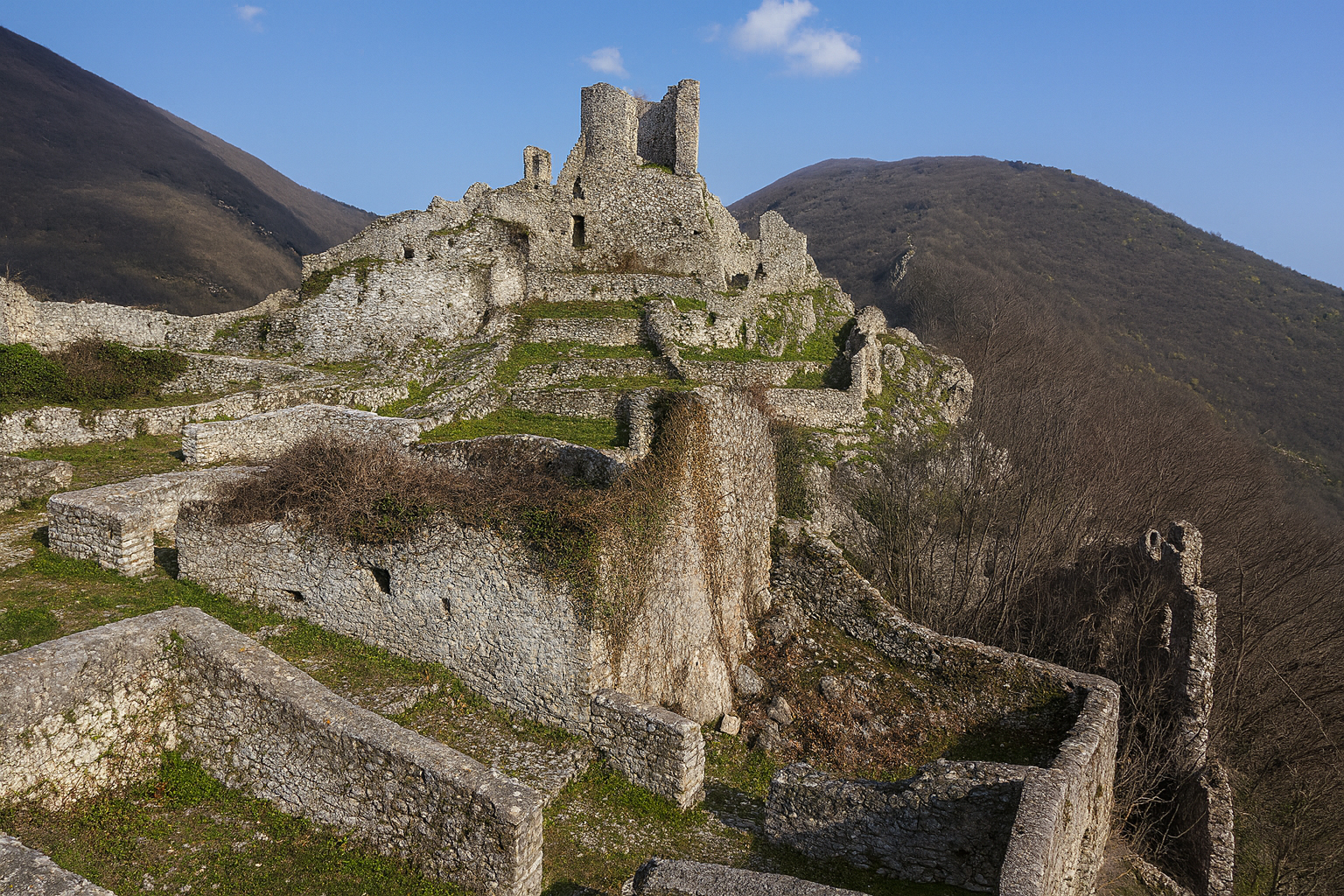
by Giovanni Bosi, Gioia Sannitica / Campania / Italy
Here, the mountains of the Sannio meet the gentle plains crossed by the Volturno River. We are, after all, in the Matese National Park, a landscape of extraordinary natural beauty that has remained largely untouched through the centuries. Among the villages worth discovering lies Gioia Sannitica, a gem that encapsulates centuries of history, legends and art. One of the most fascinating stretches of the Southern Via Francigena passes through here — the ancient route leading from Alife to Benevento, a favored stop for pilgrims bound for the Holy Land.
(TurismoItaliaNews) Finding oneself where time seems to slow down is the true reward of walking the Southern Via Francigena. Pilgrims, but also travelers in search of emotion and authenticity, are drawn here — to places off the beaten track that offer so much through the genuineness of their people. One of these is Gioia Sannitica, a small treasure chest of history and mystery in the province of Caserta, nestled between Mount Erbano and Mount Monaco di Gioia.
Here runs one of the most evocative sections of the medieval pilgrimage route that once led from Rome to Benevento, the “Gateway to the East” for those continuing toward the Holy Land. “Along this ancient road,” explains Deputy Mayor Carmine Porto, “today’s walkers retrace the footsteps of yesterday’s pilgrims, leaving Alife behind and climbing toward Gioia. In the Town Hall — a place of memory and welcome — their pilgrim ‘passport’ receives a precious stamp, a tangible testimony to both a spiritual and scenic journey.” Another, more convivial stamp awaits them at Vili Landino’s tavern, where local hospitality mingles with tales of ancient travelers. The credential, as it is formally called, is the document that grants pilgrims access to services and accommodations along the route.
🏰 The Castle that rules time
From the hamlet of Caselle, a white gravel road winds through olive trees and ancient stones up to an isolated hilltop: here stand, solemn and silent, the ruins of the Norman Castle of Gioia Sannitica. Walking among its crumbling walls, one can still sense the echo of life that once filled the fortified citadel: artisan workshops, crackling ovens, the voices of knights and merchants. The stones tell of a vibrant Middle Ages, abruptly silenced by earthquakes and epidemics that, between the 14th and 15th centuries, led to its abandonment. “Today the castle is a place of contemplation,” says Claudia Orsino of Love Matese. “From its towers, the view embraces the Volturno Valley — and on clear days, you can even glimpse the tower of Roccaromana and the distant silhouette of Mount Vesuvius". It’s one of those rare places where the gaze turns meditative and silence itself begins to tell stories.
⛪ The Sacred Cave of Saint Michael: the echo of angels in stone
Just a few kilometers from the village, in the hamlet of Curti, a fissure in the mountain guards a treasure of art and faith: the Cave of Saint Michael the Archangel. According to legend, the Archangel appeared here to the faithful in the 5th century, consecrating the grotto as a place of worship and divine protection. Even today, those who step across that rocky threshold can feel the primal power of the sacred: a silence that turns into prayer, a shadow steeped in incense and mystery. On the walls, 12th-century frescoes recount a story of encounter between cultures. The austere, linear forms reveal the hand of a Lombard artist, while the details — rosettes, eight-petaled flowers, richly adorned vestments — recall the elegance of early Apulian Romanesque art. It is a crossroads of styles and souls, much like the Via Francigena itself: a place where art becomes a journey and stone speaks the language of pilgrims.
🌒 Erbanina, the witch of the mountain
But Gioia Sannitica also guards a legend that wavers between light and darkness. It is said that, centuries ago, a woman of extraordinary beauty and arcane knowledge named Erbanina lived in the castle with her husband, the knight Ugo Villalongo. “At night,” recounts Angelo Rotunno of Love Matese, “she would anoint her body with a magical ointment to fly to Benevento, where witches gathered for the Sabbath.” One night, however, her husband — suspecting infidelity — replaced the ointment with ordinary lard. When Erbanina leapt from the tower, she plunged to her death, her desperate cry echoing through the mountains. From that day on, the nearby Mount Erbano is said to bear her name. In another version, Saint Michael the Archangel himself banished her, restoring light where dark magic reigned. Today, when the wind howls through the ruins, locals swear they can still hear her lament. And on certain summer nights, some claim to glimpse a ghostly figure drifting among the towers, searching for her lost flight.
🎨 The art of Silvano D’Orsi: a museum within the Town Hall
Il viaggio a Gioia Sannitica non si ferma alla leggenda. Oggi il borgo si racconta anche attraverso l’arte contemporanea. Nel Palazzo Comunale il pittore e scultore Silvano D’Orsi, originario del luogo e formatosi tra le ceramiche di Deruta, ha donato le sue opere alla comunità, trasformando le sale pubbliche in un museo diffuso. Tele dai colori intensi, sculture in bronzo, figure metafisiche e lune sognanti popolano i corridoi: un universo creativo che intreccia memoria e innovazione. D’Orsi, classe 1953, dopo una vita di esperimenti artistici e successi, è tornato alle radici, regalando al suo paese un’eredità di bellezza e identità.
🚶A Village to be lived, step by step
Gioia Sannitica is not a place to simply pass through — it is a place to listen to, to breathe in, to walk through. Along the cobbled alleys of the old town, the eye meets the ducal palace of the Counts Laurenzana Gaetani d’Aragona and the Church of San Felice, built in the 16th century. Nearby, the ruins of the Ponte degli Anici and the ancient tombs of San Mandato remind visitors that every stone in this land has a story to tell. Whether you arrive as a pilgrim, a wanderer, or simply a curious traveler, Gioia Sannitica offers an encounter with authenticity — a place where the hidden Campania reveals its truest self, between faith and legend, art and nature. It is a village to discover slowly, step by step, along a path that unites centuries and still today leads to wonder. Those who stop in Gioia for a stage of the pilgrimage can receive the coveted stamp on their pilgrim “passport” both at the Town Hall and at the atmospheric tavern of Vili Landino, where hospitality intertwines with tales of the ancient routes of devotion.
To learn more
www.regione.campania.it
www.agenziacampaniaturismo.it





